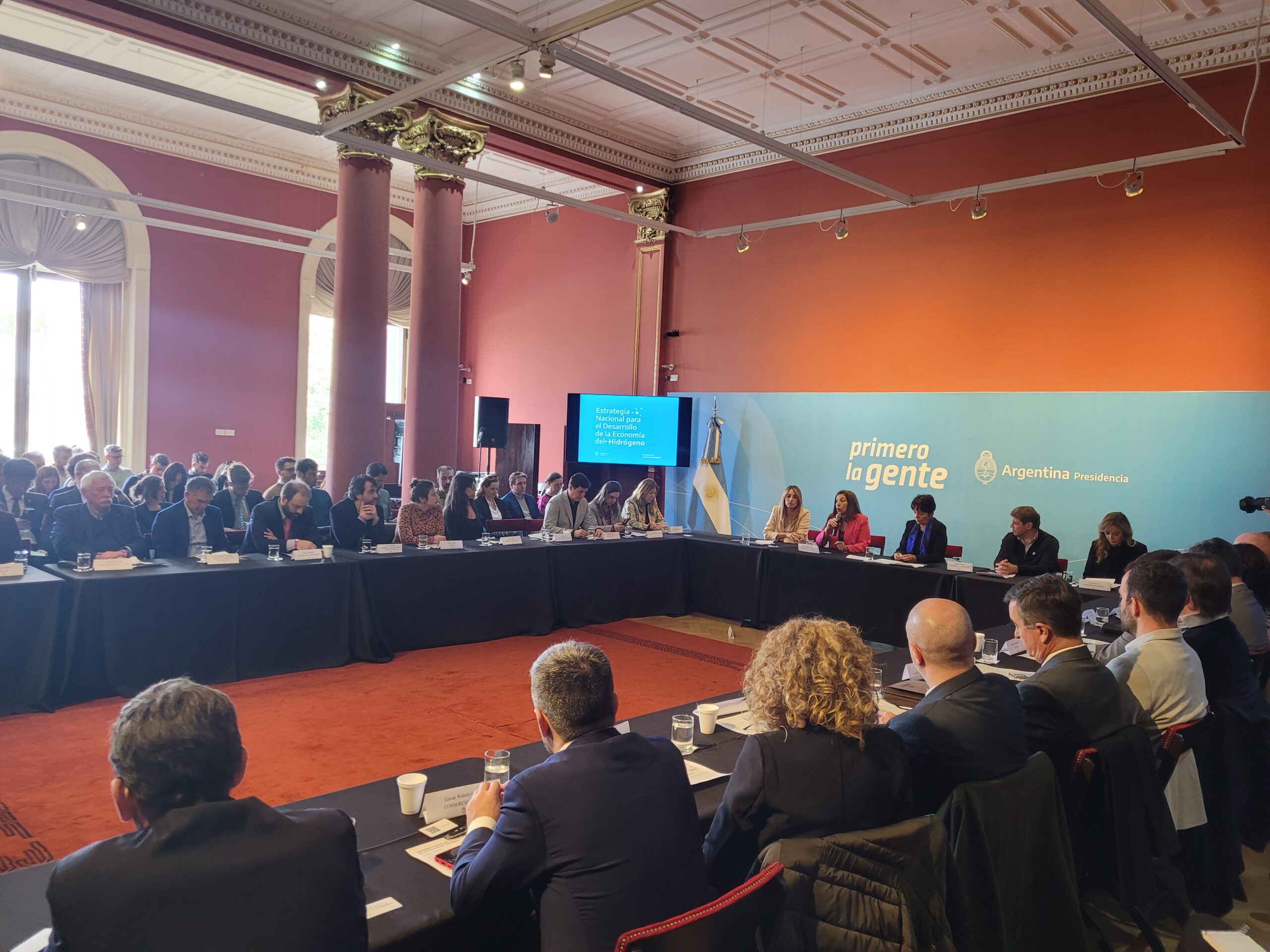After almost three years of dialogue, Argentina’s Secretary of Strategic Affairs presented its National Hydrogen Strategy on September 12, 2023.
“For a strategy to become a public policy, it must be based on consensus,” said the Secretary of Strategic Affairs, Mercedes Marcó del Pont, during the presentation of the “National Strategy for the Development of the Hydrogen Economy”, highlighting the in-depth dialogue process between representatives of the national and provincial government, and from the academic and private sector.
The governors of the provinces of Tierra del Fuego, Gustavo Melella, and of Río Negro, Arabela Carreras, and the Secretaries of Energy, Flavia Royón, and of Climate Change, Cecilia Nicolini gave the opening remarks. More than 120 national government officials, provincial authorities, and representatives of business chambers, unions, and the national scientific and technological system participated in the presentation of the study.
Flavia Royón, the Secretary of Energy highlighted that
the geographical, industrial and scientific peculiarities of Argentina position the country in a privileged place when it comes to being able to face the industrialization of hydrogen and become an international supplier of this new source of energy.
According to the strategy, by 2050, Argentina will produce at least 5 million tons of low-emission hydrogen per year domestically, 20% of which will be allocated to the local market, both for the decarbonisation of existing production (steel, petrochemical and refining industries) and for new value chains (mainly synthetic fuels). The remaining 80%, that is, about 4 million tons per year, is destined for export markets. Projections envision a competitive cost of 1,4 USD/kg for green hydrogen to serve international markets for PtX products such as ammonia and methanol.
To achieve the projected production goals, it will be necessary to install at least 30 GW of electrolysis capacity and 55 GW of renewable electricity generation capacity, which implies multiplying current renewable generation by 11. The strategy also expects the development of five production hubs and three to five ports with the capacity to export PtX products.
It sets specific goals and actions for 2030 and 2050 regarding the consolidation of domestic and export markets, the development and adoption of new technologies for the manufacturing of capital goods with local suppliers, the training of professionals with new profiles, and the generation of jobs directly and indirectly related to hydrogen.
Raul Bertero, president of the Center for the Study of Energy Regulatory Activity (CEARE), emphasised that
Argentina is a country specially designed for the energy transition given that it counts all the necessary resources and conditions, but now the strategy gives us the keys to know the pathway we should take.
As next steps, the Secretariat of Strategic Affairs highlighted that it will continue deepening the measures defined by the roadmap, and carry out the Strategic Environmental Assessment that will provide a sustainability framework for the development of the hydrogen economy in the country.
Read about how the PtX Hub supported the development of the National Hydrogen Strategy of Argentina here: A common ground for hydrogen in Argentina
